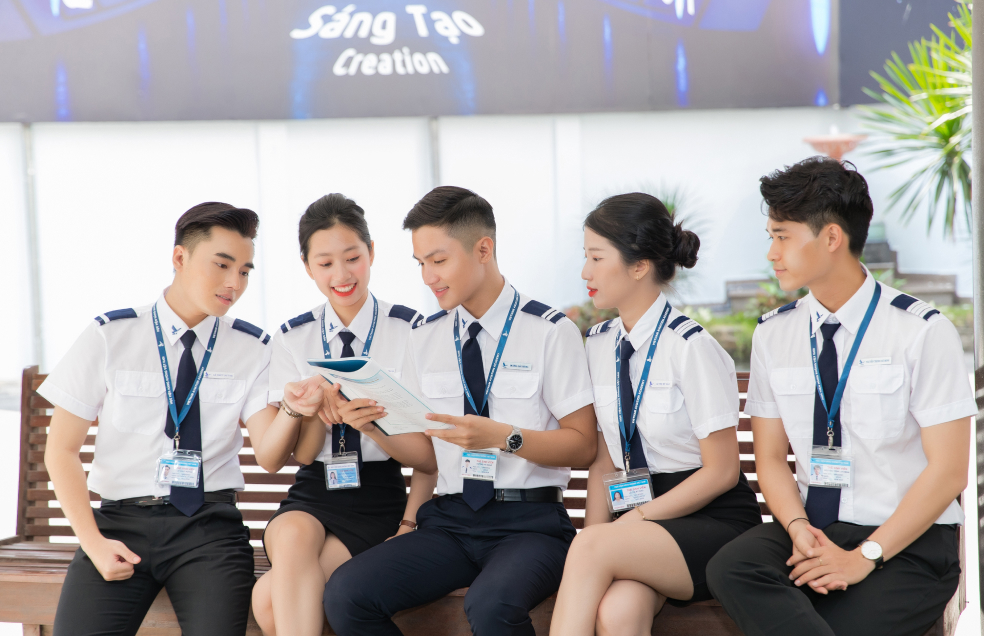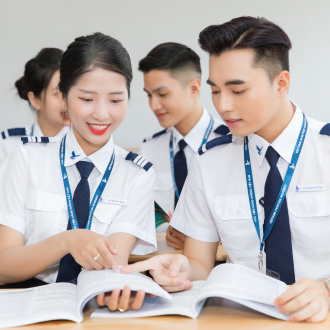VIETNAM AVIATION ACADEMY, ROADMAP TO BECOME A SMART UNIVERSITY DUE TO DIGITAL TRANSFORMATION TECHNOLOGY AND ARTIFICIAL INTELLIGENCE – 4 YEARS IN REVIEW
Smart University (AI University) is a university that applies artificial intelligence to teaching, learning, operations, management, etc. This is a model that is attracting many universities in the modern education period. This concept has been interested and researched in the past 5 years. A smart university is a school fully equipped with modern technology equipment, a smart educational ecosystem. The characteristics of a smart university are where technology is maximized to implement:
- Personalize the learning process: Each student will experience a separate learning journey, suitable for their own abilities and interests.
- Enhance interaction: Students, lecturers and staff can interact with each other more easily and effectively through online platforms.
- Improve management efficiency: The school’s management processes are automated, helping to save time and resources.
- Encourage innovation: The learning environment encourages students to develop creative thinking and explore new solutions.
Key elements of a smart university:
- Modern facilities: Fully equipped with smart classrooms, modern laboratories, electronic libraries, and creative learning spaces.
- Information technology: Applying technologies such as AI, Big Data, IoT to support teaching and learning.
- High-quality lecturers: Lecturers are well-trained, capable of using technology and inspiring students.
- Flexible training programs: Training programs are designed to meet the needs of the labor market and allow students to design their own learning paths.
- Dynamic learning atmosphere: Students are encouraged to participate in extracurricular activities, scientific research and start-up projects.
The role of smart universities in today’s era.
Meeting the needs of society: Society increasingly requires high-quality human resources that can adapt to rapid changes in technology.
Improving the quality of training: Smart universities help students acquire the knowledge and skills necessary to succeed in the future.
Enhancing competitiveness: Smart universities will attract many talented and prestigious students in the international arena.

Technologies used in Smart Universities:
1. Digital learning materials and online learning platforms (LMS):
Purpose: Replace traditional textbooks with digital documents, provide online courses, video lectures, interactive exercises.
Popular tools: Moodle, Canvas, Blackboard, Google Classroom.
2. Information management system:
Purpose: Manage information about students, lecturers, class schedules, learning results, finances, libraries, etc.
Popular tools: SAP, Oracle, Microsoft Dynamics.
3. Virtual Reality (VR), Augmented Reality (AR) and Extended Reality (XR):
Purpose: Create realistic learning environments, helping students visualize difficult concepts.
Applications: Simulate laboratories, visit virtual museums, practice surgery, etc.
4. Artificial Intelligence (AI):
Purpose: Automate tasks, analyze big data, personalize the learning process.
Applications: Chatbots to support students, automatic grading systems, suggest suitable courses.
5. Internet of Things (IoT):
Purpose: Connect physical devices in schools to collect and analyze data.
Applications: Temperature and humidity sensors in classrooms, smart lighting systems.
6. Big Data:
Purpose: Collect, store and analyze large amounts of data to make decisions.
Applications: Predicting enrollment trends, evaluating teaching effectiveness, improving student experience.
7. Blockchain:
Purpose: Ensuring data security and transparency, especially in managing degrees and certificates.
8. Machine Learning:
Purpose: Automating learning processes, analyzing data to make predictions.
Applications: Predicting student learning outcomes, recommending appropriate learning materials.
These technologies, when combined and applied effectively, will create a flexible, personalized and highly effective learning environment.

History of Digital Transformation in Higher Education:
The digital transformation of universities has been a gradual process, starting in the late 20th century and gaining momentum in recent years. From the early stages of using computers and the internet to streamline administrative functions to today’s era of AI-driven personalized learning, universities have consistently leveraged digital technology to enhance the quality of education, make it more accessible to students, and reduce costs. Here is a brief timeline of this transformation, with the integration of AI into higher education marking its latest development:
Early Years (Late 20th Century): The digital transformation of universities began with the advent of computers and the internet. In these early years, universities used these technologies to automate administrative tasks and share information via email and online portals. The focus was on efficiency and communication.
Online Learning (2000s): As the internet became more accessible, universities began offering online courses. These courses allowed students to study remotely and at their own pace. Initially, online courses were limited to certain fields of study, such as computer science and business, but they eventually expanded to other fields.
Massive Open Online Courses (MOOCs, 2010s): The next stage of the digital transformation was the advent of MOOCs. These are free online courses that anyone can take. MOOCs are often taught by professors from top universities and are designed to be accessible to anyone with an internet connection. MOOCs revolutionized higher education by making higher education more accessible and affordable.
Learning Management Systems (LMSs, 2010s): The next phase of digital transformation is the widespread adoption of learning management systems (LMSs). LMSs are software applications that help universities manage their online courses and facilitate communication between students and instructors (e.g. Blackboard, Moodle, Canvas). Students can access course materials through LMSs, submit assignments, and communicate with professors and other students.
Personalized Learning (PL, 2010s): With the advent of big data and analytics, universities began to explore personalized learning. Personalized learning uses data about students’ learning styles, interests, and performance to tailor education to their individual needs. This approach to learning has the potential to increase student engagement and improve learning outcomes.
Artificial Intelligence (AI, 2020s): The latest phase of digital transformation in higher education is the integration of artificial intelligence (AI). AI has the potential to revolutionize higher education by providing personalized feedback to students, automating administrative tasks, and improving the quality of education. AI can also be used to predict student performance, identify at-risk students, and provide early interventions to help them succeed. More recent advances in quantum technology increase the scale and scope of this transformation.
Some of the world’s leading universities have pioneered the application of technology in teaching, including:
Massachusetts Institute of Technology (MIT): MIT is famous for its high-quality Massive Open Online Courses (MOOCs), which use AI to personalize the learning process for each student. The school also invests heavily in advanced technology research laboratories.
Stanford University: Stanford has developed many mobile learning applications, using big data to analyze student learning performance and make recommendations for improvement.
Carnegie Mellon University: This school is famous for its training programs in computer science and artificial intelligence. Carnegie Mellon has applied AI to create virtual assistants to support students in the learning process.
University of California, Berkeley: Berkeley has used VR/AR to create realistic learning environments, helping students visualize difficult concepts.
University of Oxford: Oxford has invested in digital libraries, providing students with access to a vast array of research materials. The school also uses AI to aid research and innovation.

Specific examples of technology application at universities:
Georgia Tech University: Developed a completely online training program on artificial intelligence, using AI tools to interact with students.
University of Southampton (UK): Using robots to support teaching science subjects.
University of Queensland (Australia): Applying blockchain technology to manage degrees and certificates.
Vietnam Aviation Academy with digital transformation and artificial intelligence:
Deploying online learning (Massive Open Online Courses – MOOCs) since 2020.
Deploying Learning Management Systems (LMS) since 2020.
Applying digital transformation technology (BASE) to the organization, administrative management and operations of the Academy since December 2021.
Applying Artificial Intelligence (AI) to teaching and learning from 2023.
Vietnam Aviation Academy is on the path to becoming a comprehensive AI University in the near future, leading the way in applying artificial intelligence technology in all aspects of the school’s activities.
VAA – THA

Vietnam Aviation Academy compiled national standards on ground radio navigation aid systems

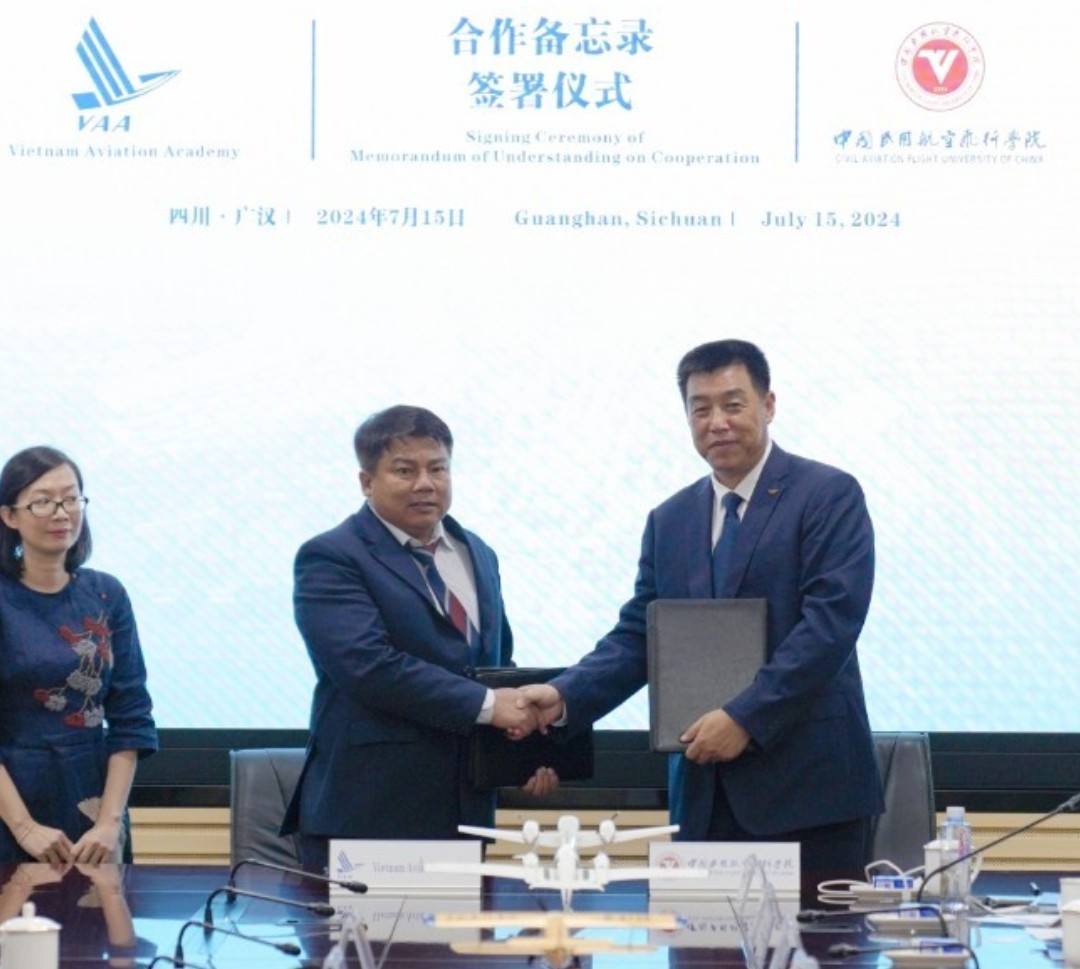
VIETNAM AVIATION ACADEMY HAS SIGNED A COOPERATION AGREEMENT WITH CIVIL AVIATION FLIGHT UNIVERSITY OF CHINA

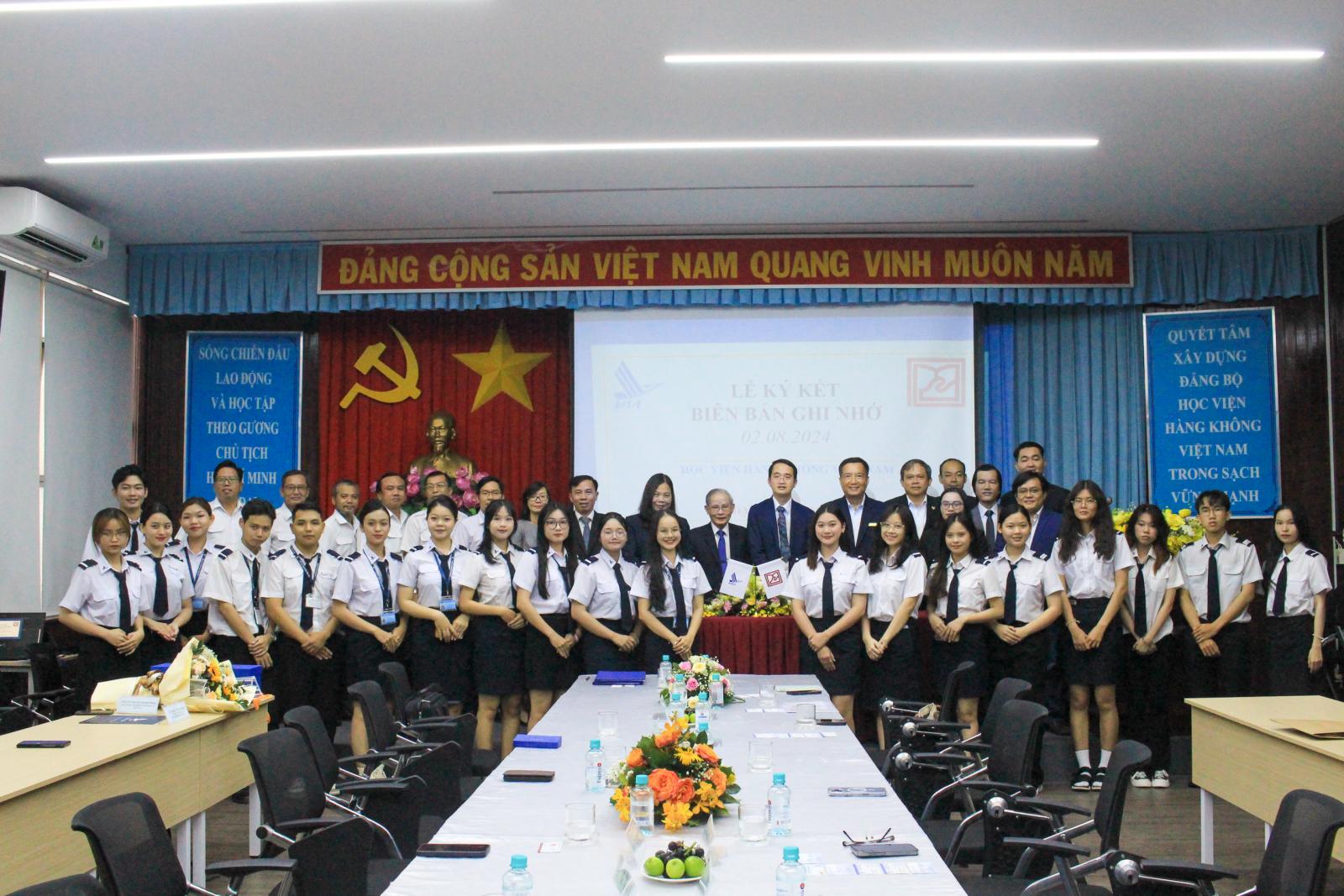
VIETNAM AVIATION ACADEMY AND DUY TAN UNIVERSITY RECOGNIZE EACH OTHER’S CREDITS

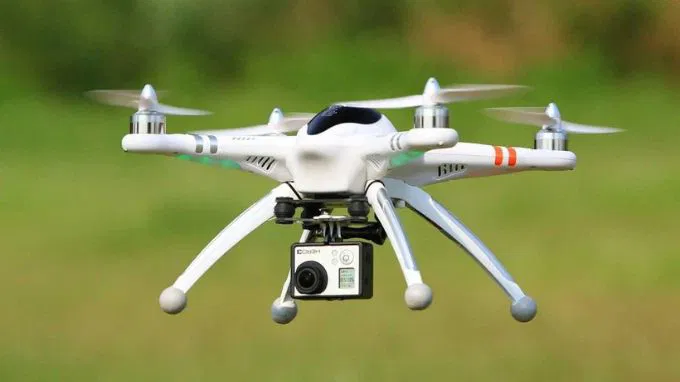
What is a UAV? What is a drone? What is the difference between UAV and drone?

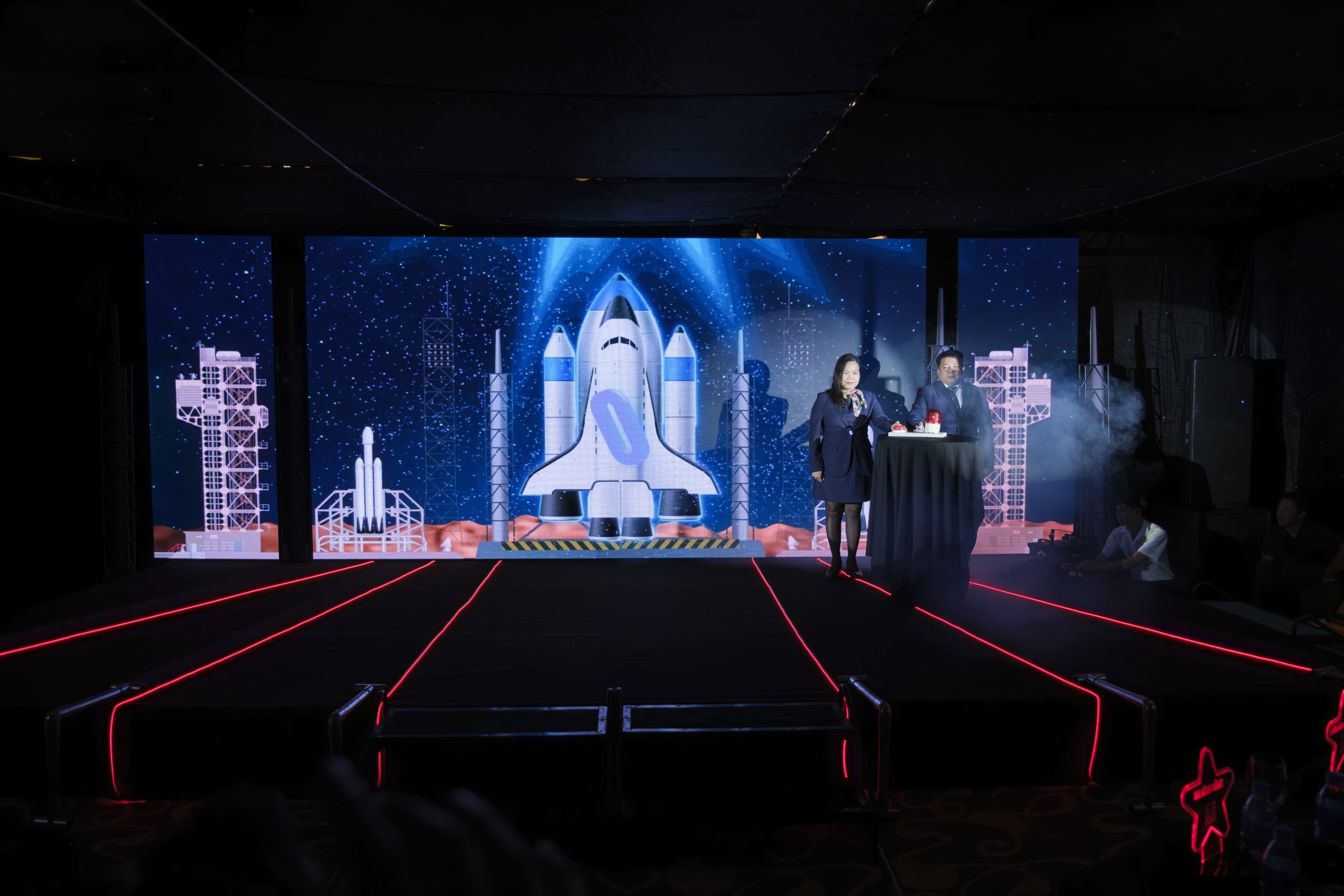
Workshop on Developing a Strategic Plan for the Vietnam Aviation Academy: Resolutely Realizing Key Strategic Objectives

